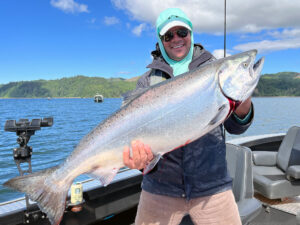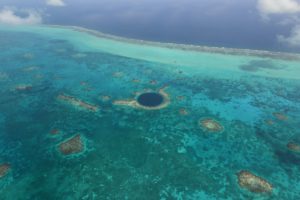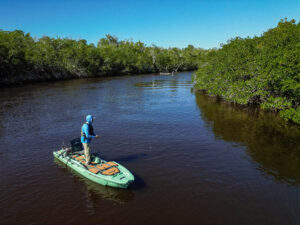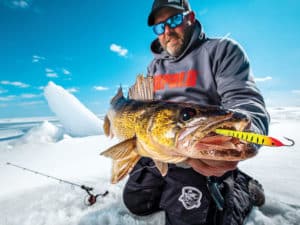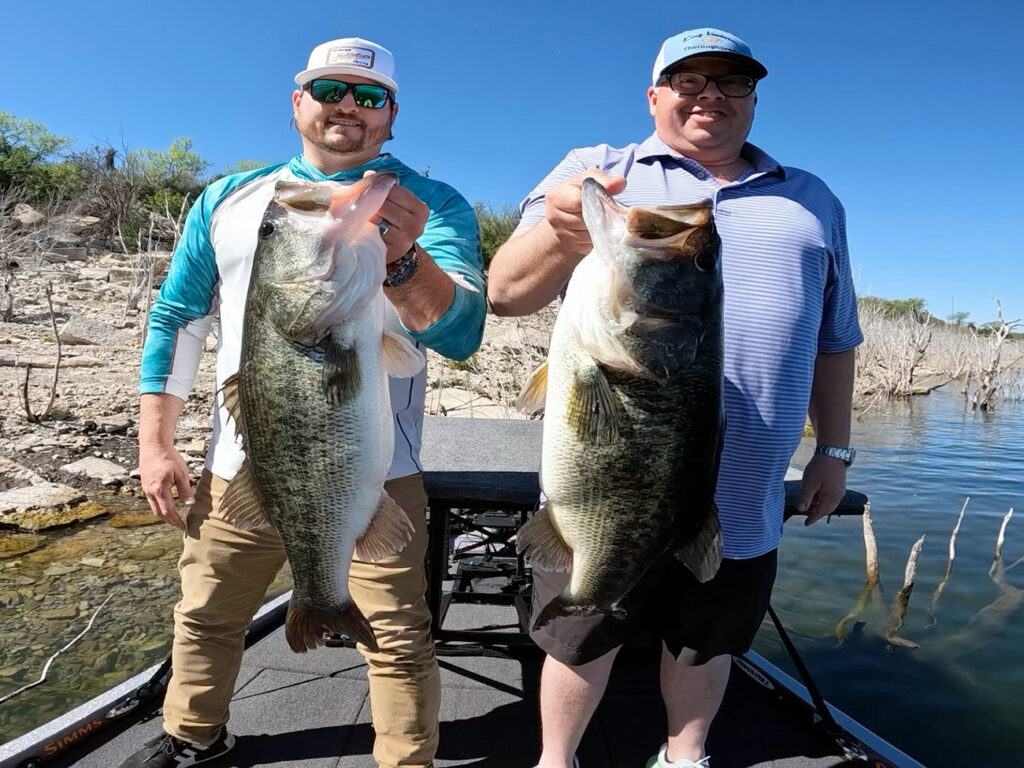
As we all know, everything is bigger in Texas. This includes slabs of slow-smoked brisket, NFL stadiums, and largemouth bass. The Lone Star state boasts many blue-ribbon bass fisheries. Still, over the last few years, O.H. Ivie Lake has risen to the top of the heap thanks to a reputation of Jurassic Park-sized bucketmouths. A big part of that are the innovative fisheries management techniques used by Texas Parks and Wildlife.
The History of O.H. Ivie Lake
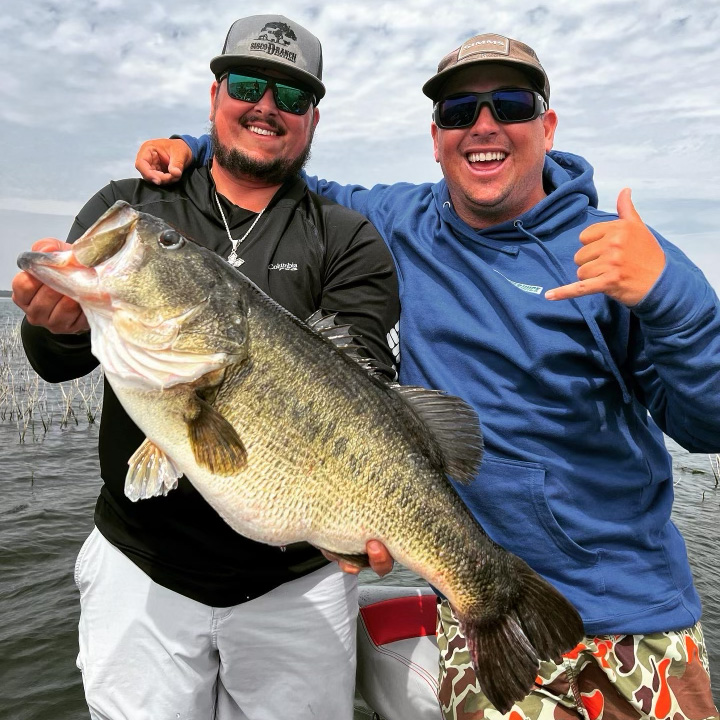
Created in 1990 when the S.W. Freese Dam was erected to impound sections of the Colorado and Concho Rivers, the 19,149-acre lake is the primary source of drinking water for the nearby city of San Angelo, Texas.
Once the lake began to fill, aggressive amounts of fry and fingerling-size Florida strain largemouth were stocked in addition to bluegill, crappie, and species of catfish. For those not aware, Florida strain largemouth are the fastest-growing variety of largemouth, capable of hitting the 14-inch mark in two years. Under the right conditions, they can add up to a pound of additional mass every season. Today, it is estimated that 75 to 85 percent of the bass in O.H. Ivie have Florida strain genetics.
There is no doubt the lake was already on its way to being a productive fishery, but in 2018 a very wet fall season after an intense drought brought the lake up over 30 feet. This expanded habitat gave bass practically endless forage and room to roam, resulting in a turbo-charged period of growth.
How the Bass Factory is Created
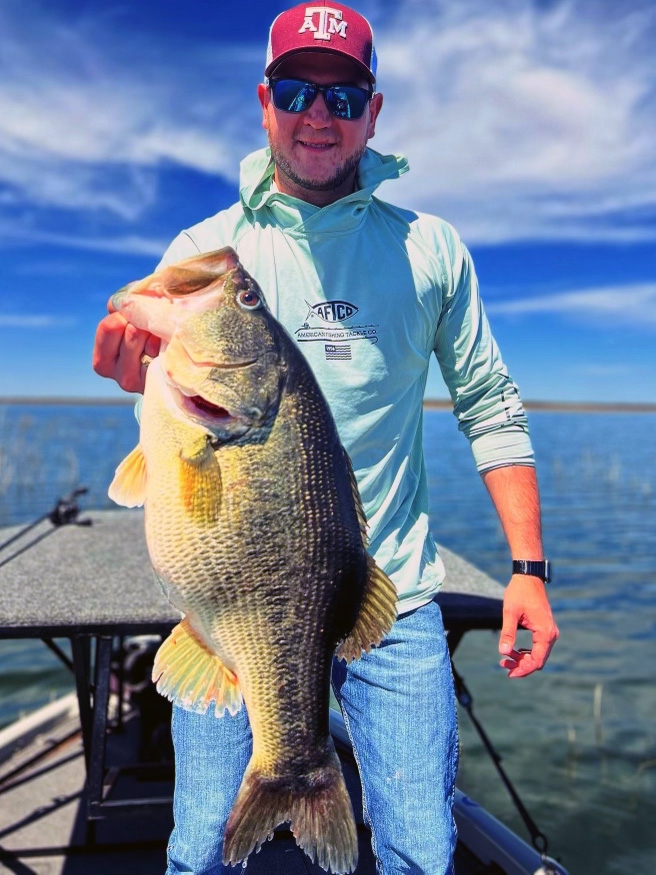
As if Florida strain largemouth and an intense growth cycle were not enough, Texas Parks and Wildlife have been busy behind the scenes ensuring that bass fishing in O.H. Ivie (and throughout the state) will be world-class for years to come.
Built on a base of scientific research, the Toyota ShareLunker program partners with Texas anglers to enhance and promote bass fishing throughout the state. The program relies on fishermen donating DNA scale samples of bass over eight pounds for genetic analysis. This process gives fisheries biologists a glimpse into the genetic diversity, lineage, and reproductive patterns of trophy-class largemouth. To add incentive to the project, anglers who opt to register their trophy catch receive a prize package depending on weight class and entry into a prize package drawing.
Still, it gets better. During the spawning season of January, February, and March, anglers who catch a female bass weighing over 13 pounds can donate the specimen to state biologists and qualify it for the Lunker Legacy Class. From there, the fish is brought into state-of-the-art labs where it breeds with a male originating from two prior ShareLunkers. Since spawning is done in a controlled environment, more eggs hatch than they would in the wild. Once the fry grows to stockable sizes, they are returned to the lake the female was caught from, continuing the spread of trophy genetics.
So far in 2024, O.H. Ivie has produced 35 bass of ShareLunker status with 12 breaking the 13-pound mark needed for donation. The largest bass weighed in this year was a staggering 15.82 pounds. During the 2023 season, the lake was responsible for 75 entries in total, with 15 fish earning Lunker Legacy status. Full insight into ShareLunker archives can be found in the archives.
Best New Big Bass Lures
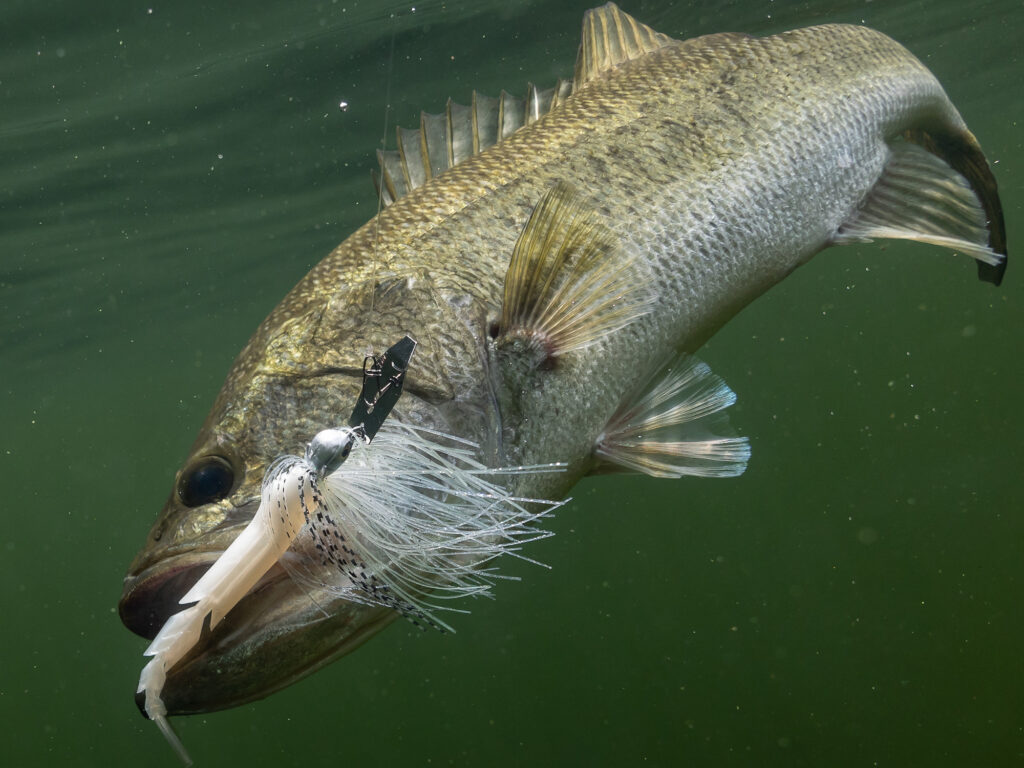
- Search Bait: A Z-Man Chatterbait Elite Evo paired with the new Chattershad is the bass bait you should be throwing when covering water. The enticing vibration is just too addicting for largemouths no matter the region.
- Swimbait: The Berkley PowerBait Minnotator has a fishy pattern that looks just like a shiner, paired with a length of 3.5 inches and weight of 3/8 ounces. Cast this affordable bait with your favorite swimbait setup for prime action.
- Crankbait: The Berkley Dime crankbait is meant to be knocked around every branch, rock, dock piling or other hard structure you can find. Whatever the conditions, a crawfish coloration always gets bit.
- Glide Bait: Shimano’s Gravitator 220SS glide bait is a big presentation looking for a big bite. Glide bait fanatics need to add this one to their arsenal. Heavy duty hardware means it will handle bycatch such as pike.
- Underspin: Have you seen this? A new underspin meant to handle big fish. Yes, it was meant for saltwater, but Daiwa’s 24 Smelthead DX jighead and underspin pairs perfectly with your favorite giant soft baits for largemouths.
- Jig: Use Strike King’s Hack Attack Fluorocarbon Flippin Jig when fishing clear water that’s heavily pressured. A smaller diameter hook actually helps with hookups, even with your favorite trailer dancing around like a bellydancer.
Techniques for Largemouth Bass on O.H. Ivie
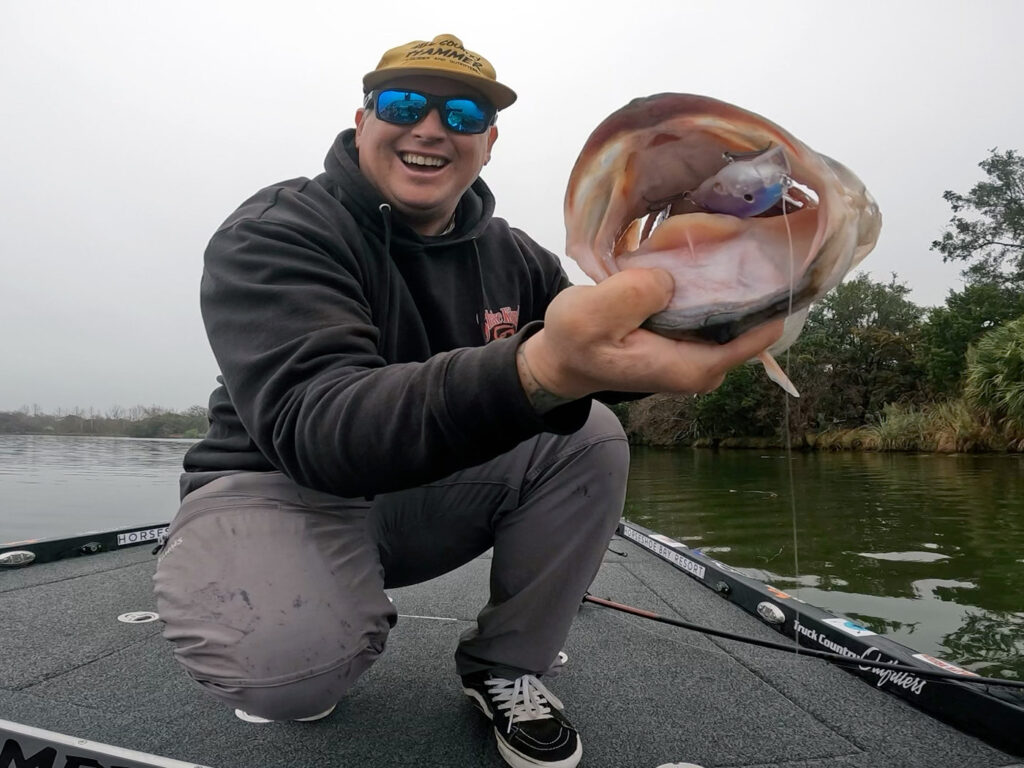
Interested in the best techniques to land big bass at O.H. Ivie lake? Listen to Rick Harris, a staple in the Texas bass fishing tournament scene and a seasoned guide running the bulk of his client trips on O.H. Ivie. Harris encourages folks to swing for the fences when planning a trip to the lake. That means to steer clear from ultra-finesse presentations known for producing numbers of bass, instead focusing on keeping everything big and bulky. Baits like magnum swimbaits, heavy-cover jigs, and plus-sized crankbaits all have their place and can be fished effectively through the standing timber that holds bass throughout the lake.
The best time to visit the lake in pursuit of a giant is in early spring as the bass transition from pre-spawn into the spawn. During the spawn, classic sight-fishing tactics are brutally effective for hunting down the large females guarding their nests along the shorelines. The only issue with this plan is that it hinges on the weather, as chop-producing winds and dirty water conditions can make fish impossible to spot. During these times, Harris utilizes forward-facing sonar in perspective mode as it allows him to scan likely spawning zones for active beds when they cannot be spotted due to water clarity issues.


